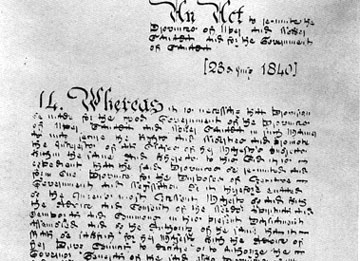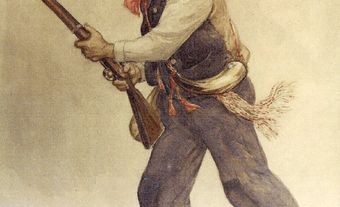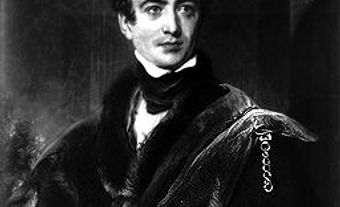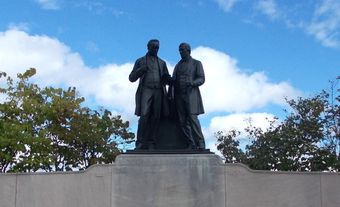The Act of Union was passed by the British Parliament in July 1840. It became law on 10 February 1841. It merged Canada West (formerly Upper Canada) and Canada East (formerly Lower Canada) into the Province of Canada (1841–67). The Act was based on the findings of the Durham Report. It was presented by Lord Durham in 1839. The Act sought to assimilate French Canadians, limit the power of the Family Compact and promote economic growth.
This article is a plain-language summary of the Act of Union. If you would like to read about this topic in more depth, please see our full-length entry: Act of Union.

Durham Report
In late 1837, violent rebellions took place in Upper and Lower Canada. (See Rebellions of 1837–38 [Plain-Language Summary].) In May 1838, Governor General Lord Durham was sent from Britain to find out what had caused the unrest. He found that the Family Compact had been blocking economic and social development. Durham felt that this was a leading cause of the rebellion in Upper Canada.
Durham’s fix was to have a system in which colonial governments (in domestic matters, at least) had to answer to the electorate rather than the Crown. He proposed that Upper and Lower Canada be merged under one government. He presented this plan in the Durham Report (1839).
Lord Durham thought a united province would develop more commerce. It would also have an English-speaking majority. This would help curb the divisive issues in the mostly French Lower Canada. It would also make it easier to introduce responsible government, which Durham called for. Britain agreed to the union. But it did not agree to responsible government.

The Act's Passage
The bill to create the new Province of Canada was tabled in the British House of Commons in May 1839. In September, Charles Poulett Thomson (later Lord Sydenham) was named governor general. He was sent to get Canada’s consent to the Act. He got the consent of Lower Canada in November. He got Upper Canada’s consent in December. The two legislatures were merged in early 1840. The Act was passed by the British Parliament in July 1840. It was proclaimed on 10 February 1841 in Montreal.
How It Worked
The name of Lower Canada was changed to Canada East. Upper Canada became Canada West. The two regions’ debts were combined. A Civil List (the list of officials on the government payroll) was created. The French language was banned from official government use. Specific French Canadian bodies related to education and civil law were suspended.
The Act created a single parliament. It had the same number of seats for each region. But Canada West had a smaller population. So the French population in Canada East was under-represented. (See also Rep by Pop.)
In Upper Canada, the Family Compact opposed the Act. Many in Lower Canada were angered by the Act’s anti-French measures. In fact, the Act was unfair to Lower Canada. It had a larger population and a smaller debt. But both Canadas agreed to work within the Act. This was largely due to the influence of the Reform Party. It was led by Louis Lafontaine in Canada East and Robert Baldwin in Canada West.
Within 15 years, many of the Act’s unjust clauses were repealed. Economic prosperity brought wealth and growth to the united colony. Responsible government was granted in 1848. It allowed for changes to many of the Act’s clauses.
See also Act of Union: Timeline; Act of Union: Editorial; Rebellions of 1837–38 [Plain-Language Summary]; Durham Report (Plain-Language Summary); Responsible Government (Plain-Language Summary).

 Share on Facebook
Share on Facebook Share on X
Share on X Share by Email
Share by Email Share on Google Classroom
Share on Google Classroom



